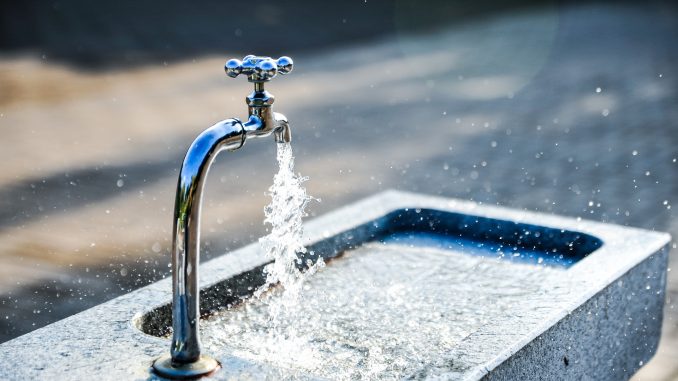
A recent investigation conducted by Consumer Reports and The Guardian illustrated the alarming extent of the clean water problem across the United States. Insufficient clean water is a particular tragedy in developing countries—where up to 80% of illnesses are linked to poor water and sanitation infrastructure—but it’s also a crisis affecting large swaths of the United States.
Indeed, the recent study found that 118 out of the 120 water samples collected from sites across America contained dangerous levels of toxic substances, including PFAS, the organic compounds dubbed ‘forever chemicals’ which accumulate in the human body, as well as arsenic and lead. Nearly every sample had measurable amounts of PFAS, while more than 35% exceeded what scientists believe should be the absolute maximum for these chemicals which have been linked to health problems including cancer and learning delays in children.
About 8% of the samples contained unacceptably high levels of arsenic, and almost every sample had measurable amounts of lead—a particularly worrying finding, given the scientific consensus is that there is no safe amount of lead in drinking water. The figures are shocking, especially given that readily available filtration systems could remove many of these contaminants. And yet the extent to which high-quality filtration systems are being used varies widely among communities.
A problem of unequal access
Indeed, the United States’ water crisis has raised uncomfortable questions about racial and economic inequality in the country. Another analysis of more than 140,000 public water systems published by the Guardian in February found that water systems which service poorer and rural counties are far more likely to violate the standards set by the Environmental Protection Agency than those that provide water to wealthier or urban ones.
In particular, the study showed that Latino communities are worst affected by the crisis—in fact, water systems in counties with substantial Latino populations were more than twice as likely to violate water contamination rules. According to experts, Latino communities may be at particular risk given that many live near industrial farms in California and the American West which pollute local water with nitrates in runoff from fertilizers and manure. Latino families living in the Southwest, meanwhile, must contend with high levels of arsenic violations as a result of poor infrastructure.
Unsurprisingly, these problems have translated into a general mistrust among Latino communities regarding drinking water. Research has found that there is widespread distrust of tap water in the communities worst affected by the crisis; a recent report by the University of Arizona found that most Latino residents in Nogales, Arizona thought that drinking tap water was as unsafe as drunk driving, and more detrimental to their health than smoking. Many turn to bottled water as a lifeline, as it is the only readily available source of water that they can trust.
A global issue
Of course, the unequal access to clean and safe tap water in America is a microcosm of a problem affecting people on every continent. In many developing countries, access to clean water cannot be taken for granted. The failure to provide access to clean water and sanitation worldwide has become particularly glaring over the course of the coronavirus pandemic, as inadequate clean water presents a very real obstacle to controlling the virus. Three billion worldwide, for example, still lack the basic hand washing facilities necessary to stop the spread of Covid-19 and other diseases.
Volkan Bozkir, the UN General Assembly President, recently lamented the global failure to provide proper drinking water and sanitation to the most deprived areas of the planet. “If I may be candid,” Bozkir said at the kick-off of a high-level UN meeting on ensuring water and sanitation are available to all, “it is a moral failure that we live in a world with such high levels of technical innovation and success, but we continue to allow billions of people to exist without clean drinking water or the basic tools to wash their hands”.
A paper from last year in the Journal of Global Health demonstrated that the risks with water scarcity and coronavirus extend beyond even hand washing and surface cleaning. Houses in economically deprived areas are often forced to share water, a practice which contravenes social distancing and increases the risk of spread alongside the difficulty of fetching water from communal sources in a safe fashion. To make matters worse, there is evidence to suggest that coronavirus might be spread by contaminated wastewater. Steven G. Hall, a biological engineer and one author of a recent study on the phenomenon said, “untreated water and wastewater can carry coronaviruses, and there is good evidence that wastewater previously led to coronavirus outbreaks. This suggests that something similar could happen with COVID-19”.
Hope for narrowing the gap
Under the circumstances, it’s never been clearer that a concerted push to repair creaking water infrastructure and implement new filtration systems is needed. There is one major sign of hope for America’s water crisis in President Joe Biden’s new infrastructure bill, which earmarks substantial sums for improving the country’s water infrastructure. The $2 trillion plan, announced at the end of March, promises to spend $56 billion towards modernising the country’s water systems, plus an additional $45 billion towards replacing all remaining lead pipes in American homes and $10 billion towards filtering PFAS out of the country’s drinking water. Critically, the infrastructure plan seeks to focus on investments that will help low-income communities and people of colour.
The recent damning studies into America’s water security (or lack thereof) demonstrate that Biden’s plan could not have come soon enough. It should serve as a blueprint for efforts around the world, because a unified front will be required to ensure that access to clean water is no longer a luxury. The pandemic must thus be viewed as opportunity: to learn from the institutional failings and widespread hardship which this past year has highlighted in order to fix global infrastructural shortcomings.


Leave a Reply